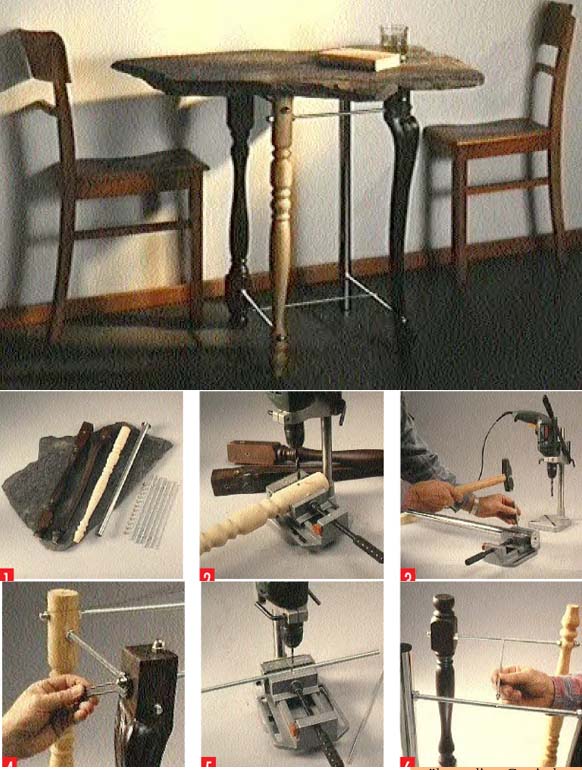 Who actually claims, that all four legs of a table must always look the same? The same applies to this proposal for furniture recycling: Lateral thinking is the order of the day, and an unbiased view shows the seemingly familiar in a new light.
Who actually claims, that all four legs of a table must always look the same? The same applies to this proposal for furniture recycling: Lateral thinking is the order of the day, and an unbiased view shows the seemingly familiar in a new light.
So that the joke of this idea comes into its own, you should gather four leftover furniture legs, which are only similar in their length and are as different in style as possible. So that a thoroughly skewed picture and no regularity emerges, we put an untreated slab of slate on top, where you look in vain for right angles and parallels.
What else do you need?, are threaded rods with nuts – and sense of irony.
You need old table- and new chrome legs, threaded rods (∅ 10 mm, cross connection: ∅ 5 mm) mit Hut- and threaded nuts. Pierce the table legs twice (∅ 10,5 mm): from the top edge first 3 cm, then – after a turn around 90 City – 5 inches away. Vor dem Durchbohren des Chrombeins müssen an den zuvor markierten Stellen mit einem Körner kleine Dellen eingeschlagen werden. The threaded nuts ensure that the legs are evenly spaced all around, which are then fixed in their final position with cap nuts.
Two threaded rods for the bracing at the foot of the table are each drilled through exactly in the middle (∅ 5 mm). Attach the lower cross-connections as shown in the picture 4 and with another threaded rod (0 5 mm) stiffen in the middle.
Aluminum for the finish – The bracing made of uncovered threaded rods looks extremely technical. Aluminum tubes are an alternative solution (the inside diameter in our case: 10 mm) from the hardware store, which are pushed over the threaded rods and give an even picture. Because they in turn ensure the distances, then no nuts are needed, but instead washers for the end points.